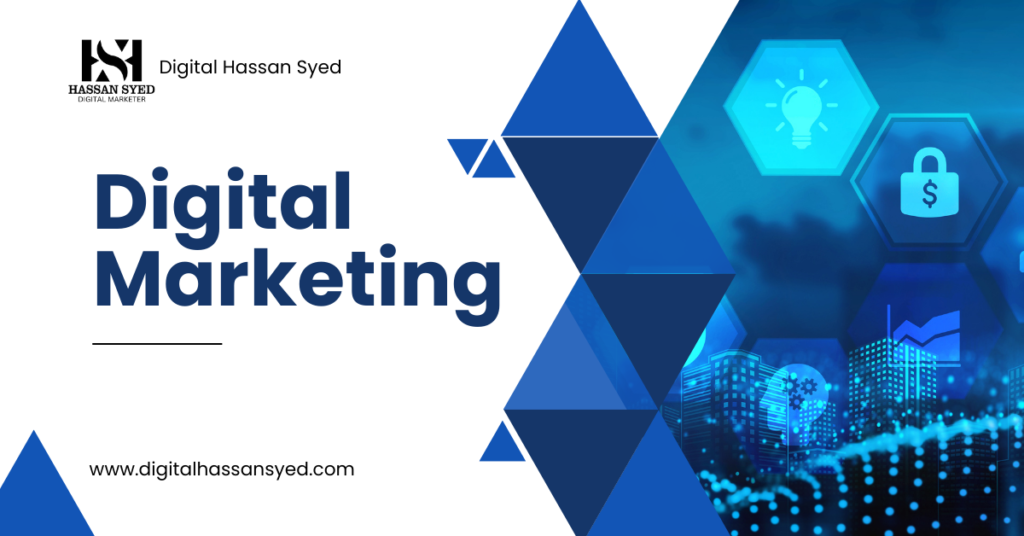Introduction
In today’s fast-paced digital world, businesses need to stay visible to thrive. And with everyone spending more time online than ever, digital marketing has become essential. Whether you’re a small business owner, an aspiring digital marketer, or a student wanting to learn about digital marketing, understanding the right strategies can give you an edge. For more strategies and digital marketing services check DGmark agency.
This guide explains what digital marketing services & strategies are, why they matter, and how to create one that works for your goals. We’ll walk through the essentials—from SEO and social media to PPC and email marketing—covering every detail you need to grow an online presence. Let’s get started!
Section 1: Understanding Digital Marketing Strategies
What Is a Digital Marketing Strategy?
A digital marketing strategy is a plan that outlines how a business will achieve its marketing goals through online channels. These channels can include social media, search engines, email, websites, and more. A strategy doesn’t just list what you want to do; it organizes your goals and provides a step-by-step approach to achieving them.
For example, suppose your goal is to increase your website traffic by 20% in three months. A digital marketing strategy would outline the exact methods you’ll use, like optimizing your blog posts with relevant keywords, running targeted social media ads, and sending out regular email newsletters.
Difference Between Strategy and Tactics
While a strategy is the overall plan, tactics are the specific actions you take to execute the strategy. If the strategy is your roadmap, then tactics are the steps you follow to reach your destination.
For instance, if you’re following a content marketing strategy, your tactics might include:
Writing weekly blog posts with SEO-optimized keywords
Creating shareable infographics on social media
Recording monthly videos on trending topics
Why Digital Marketing Strategies Matter
A solid digital marketing strategy helps businesses reach their specific goals efficiently. It allows you to:
Connect with Your Audience: Meet your target customers where they spend their time online.
Stand Out from Competitors: A clear strategy helps you build a unique brand that sets you apart from others in your field.
Optimize Marketing Efforts: By measuring what works, you can refine and improve your approach over time.
Section 2: Core Components of a Digital Marketing Strategy
Now, let’s explore the key components of a successful digital marketing strategy. Each one plays a unique role in reaching your audience and building your brand.
- Content Marketing
Content marketing involves creating valuable, informative, and engaging content to attract and retain an audience. Unlike traditional advertising, content marketing doesn’t directly promote your product. Instead, it builds trust with potential customers by providing useful information.
Examples of Content Marketing:
Blog Posts: These can cover industry news, tips, or how-tos.
Videos: Short or long videos explaining topics relevant to your audience.
Infographics: Visually engaging graphics that simplify complex information.
Content Marketing Tips:
Understand Your Audience: Know their interests, problems, and questions.
Focus on Quality Over Quantity: One valuable blog post is worth more than ten generic ones.
Use SEO: We’ll cover SEO next, but remember to include relevant keywords in your content.
- Social Media Marketing
Social media platforms—like Instagram, Facebook, Twitter, and LinkedIn—are essential tools for connecting with audiences in real time. Social media marketing involves creating and sharing content on these platforms to build brand awareness, attract followers, and engage customers.
Choosing the Right Platform:
Instagram and Facebook are great for visual content and e-commerce brands.
LinkedIn works well for B2B companies and professional networking.
Twitter is effective for real-time engagement and customer service.
Tips for Social Media Marketing:
Post Consistently: Engage followers with regular updates and content.
Engage with Your Audience: Reply to comments, messages, and mentions.
Use Hashtags: On platforms like Instagram, hashtags increase visibility.
- Search Engine Optimization (SEO)
SEO stands for Search Engine Optimization. It’s the practice of improving your website’s visibility in search engine results, like Google. The goal is to attract organic (non-paid) traffic by ranking higher on search engines for relevant keywords.
Basic SEO Concepts:
Keywords: Words or phrases that people search for (e.g., “best digital marketing strategies”).
On-Page SEO: Optimizing individual pages on your site (e.g., adding keywords to titles and headings).
Off-Page SEO: Building backlinks from other websites to improve your site’s credibility.
SEO Tips:
Conduct Keyword Research: Use tools like Google Keyword Planner or Ahrefs to find keywords your audience searches for.
Optimize Content for SEO: Include keywords naturally in your content.
Build Quality Backlinks: Backlinks from reputable sites boost your authority.
- Email Marketing
Email marketing is a powerful tool for reaching your audience directly. Unlike social media, email allows you to connect on a more personal level, providing value and building relationships over time.
Types of Emails:
Newsletters: Regular updates about your business.
Promotions: Special offers or sales.
Educational Content: Tips, guides, or insights related to your industry.
Email Marketing Tips:
Grow Your Email List: Offer something valuable (like a free guide) to encourage people to subscribe.
Segment Your List: Group subscribers based on interests or behaviors for targeted emails.
Personalize Emails: Personalization increases engagement. Use the recipient’s name and suggest content relevant to them.
- Pay-Per-Click (PPC) Advertising
PPC advertising is a method where businesses pay for each click on their ads. The most common PPC platform is Google Ads, but social media sites like Facebook and Instagram also offer PPC options. PPC is effective for reaching specific audiences quickly, especially if you have a budget for paid ads.
Tips for PPC Success:
Define Clear Goals: Know whether you want traffic, conversions, or brand awareness.
Choose Targeted Keywords: Use keywords relevant to your product or service.
Optimize Landing Pages: Ensure that users find the information they’re looking for after clicking.
- Affiliate Marketing
Affiliate marketing allows you to partner with others who promote your products for a commission. Affiliates are typically bloggers, influencers, or websites with an audience that might be interested in your product.
Affiliate Marketing Tips:
Choose Affiliates with a Relevant Audience: Make sure their followers align with your target market.
Offer Competitive Commissions: Higher commissions attract more motivated affiliates.
Provide Marketing Materials: Offer banners, links, and promotional content.
- Influencer Marketing
Influencer marketing involves partnering with social media influencers who have a loyal following. This method works well when your product aligns with the influencer’s audience, helping you reach potential customers more authentically.
Influencer Marketing Tips:
Choose Influencers Carefully: Look for those with genuine engagement, not just high follower counts.
Define Clear Goals and Guidelines: Communicate what you expect and let the influencer use their voice.
Measure Results: Track metrics like engagement, traffic, and conversions from the influencer’s posts.
Section 3: Developing Your Digital Marketing Strategy
Once you know the key components, it’s time to put together a plan. A well-thought-out digital marketing strategy can guide your efforts and help you achieve measurable results.
- Defining Your Goals and KPIs
Setting goals is crucial to measure your success. KPIs (Key Performance Indicators) are specific metrics that track your progress toward these goals. Common KPIs include:
Website Traffic: The number of visitors to your site.
Conversion Rate: The percentage of visitors who complete an action (e.g., purchase).
Engagement Rate: Likes, comments, shares, and other interactions on social media.
Tips for Setting Goals:
Make your goals SMART (Specific, Measurable, Achievable, Relevant, Time-bound).
(Continued: The full guide will include Sections 3 to 5, each providing step-by-step details, examples, and tips to help students understand and apply effective digital marketing strategies.)
This is just the beginning of your digital marketing journey! You’ll find that as you apply these concepts, you’ll gain valuable skills and insights into how online marketing work

